I. About Tam Coc in Vietnam
Tam Coc is one of the top famous tourist destinations in the northern part of Vietnam. It is a magnificent cave system and part of Trang An Scenic Landscape Complex, a UNESCO World Heritage Site. The word “Tam” means “Three”, and “Coc” is “Cave”, so the name “Tam Coc” implies the area of three caves. Tam Coc is often likened to Halong Bay on land by its cave karst system. Let’s explore Tam Coc with the Mekong Smile Tour!
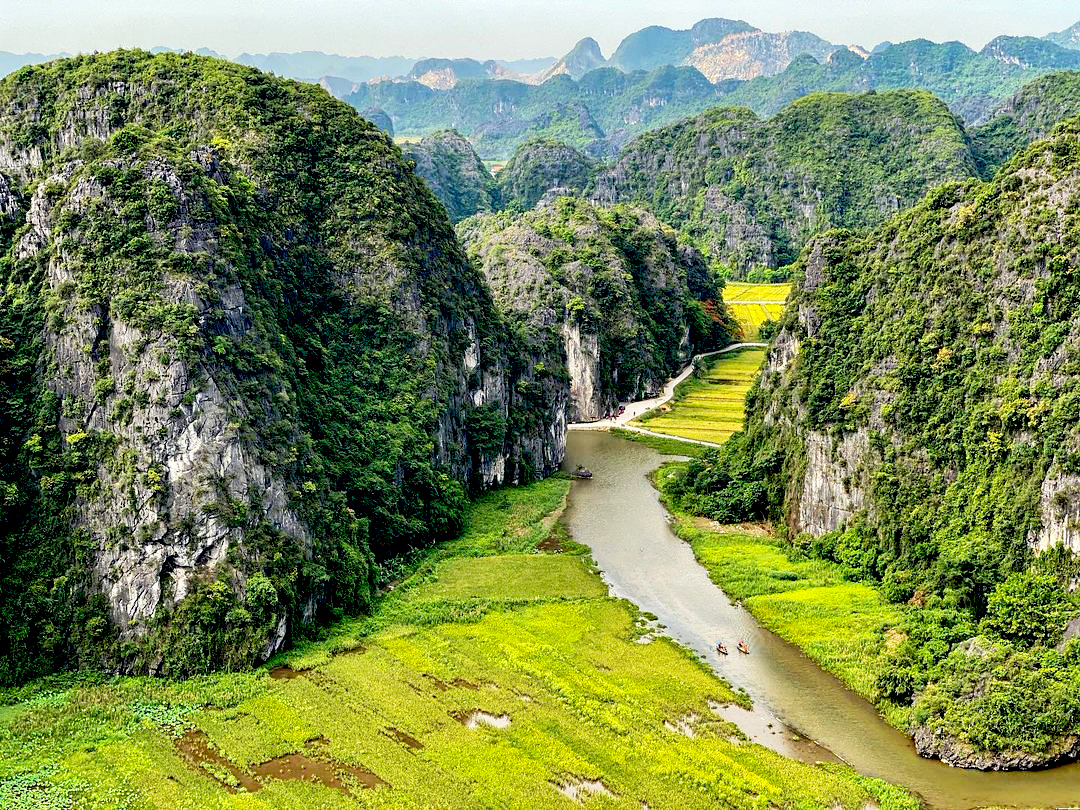
1. Location
Tam Coc is located in Ninh Hai commune, Hoa Lu district, Ninh Binh province. This place is near the village of Tam Coc, and to the south of Ha Noi city. It consists of two distinct attractions namely Tam Coc, a flooded cave karst system, and Bich Dong, a series of mountain pagodas. The total area of Tam Coc is up to 350ha with a natural landscape beauty and huge mountain ranges.
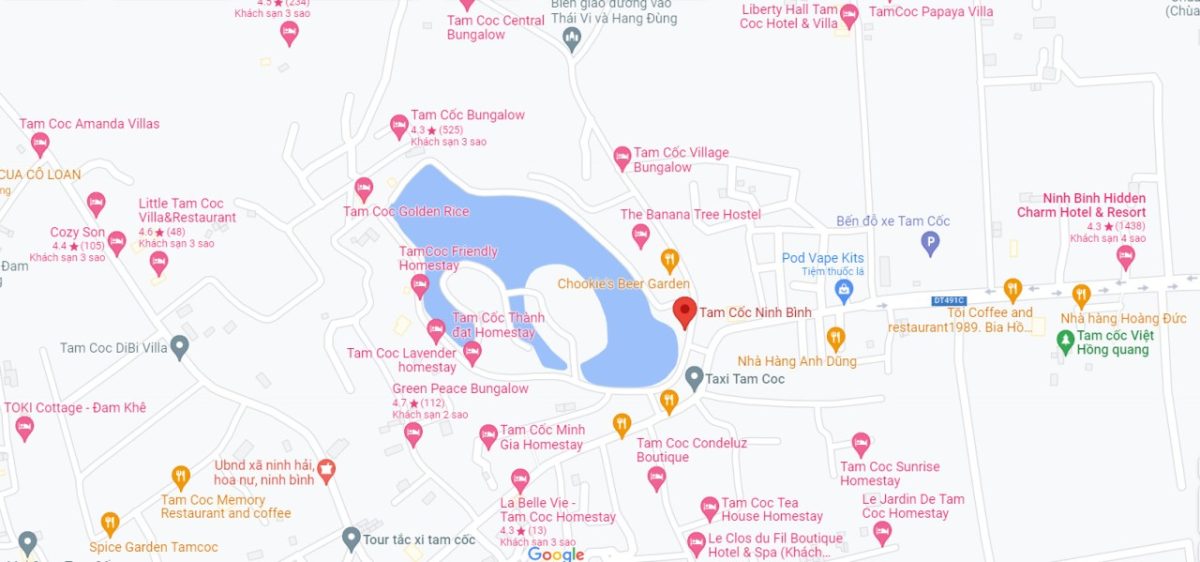
2. How to get there
It will take about three hours to come to Tam Coc from Hanoi by both bus and train. Going by both means, you will be taken to the city of Ninh Binh first. After that, you need to arrive at Tam Coc by taxi for approximately 20 minutes remainder of the journey.
Bus: If you are an adventurous traveler and want to challenge yourself, local buses are the best choice for you. You need to move to Hanoi’s southern bus terminal, Giap Bat, to travel to Ninh Binh. The buses will stop at many bus stops to pick up passengers, so it may have negative effects on your plans.

Train: There are three trains departing daily from Hanoi Station, namely SE5, SE7, and SE19. The journey takes about 2.5 hours.

II. Best things to do in Tam Coc, Ninh Binh
Tam Coc is a sound-after destination to spare your few days to explore all the things. Take your days slowly contemplating the beauty of the scenery. Here are several things that you must do when coming to Tam Coc.
1. Take a boat tour
Taking about tour is an indispensable activity for Tam Coc tour. When reaching Tam Coc pier, you will park your motorbike or bicycle near the WC for a 10,000 VND fee. After that, you will pay 120,000 VND for the entrance fee and 150,000 VND per boat. Four local visitors are allowed on each boat while the number of foreigners is two. Additionally, a boat ticket fee of 150,000 VND can be split between two persons or four tourists. Then, you will put on a life jacket and be assigned a boat driver. Many of the drivers here are skilled enough to row the boat with their feet.

As your boat floats down the Ngo Dong River, you can see colorful yellow and green rice on both sides and limestone karsts. After passing through paddy fields, you will be taken to go through a few caves. Have your camera ready and take memorable photos because around every twist is a new breathtaking scene.
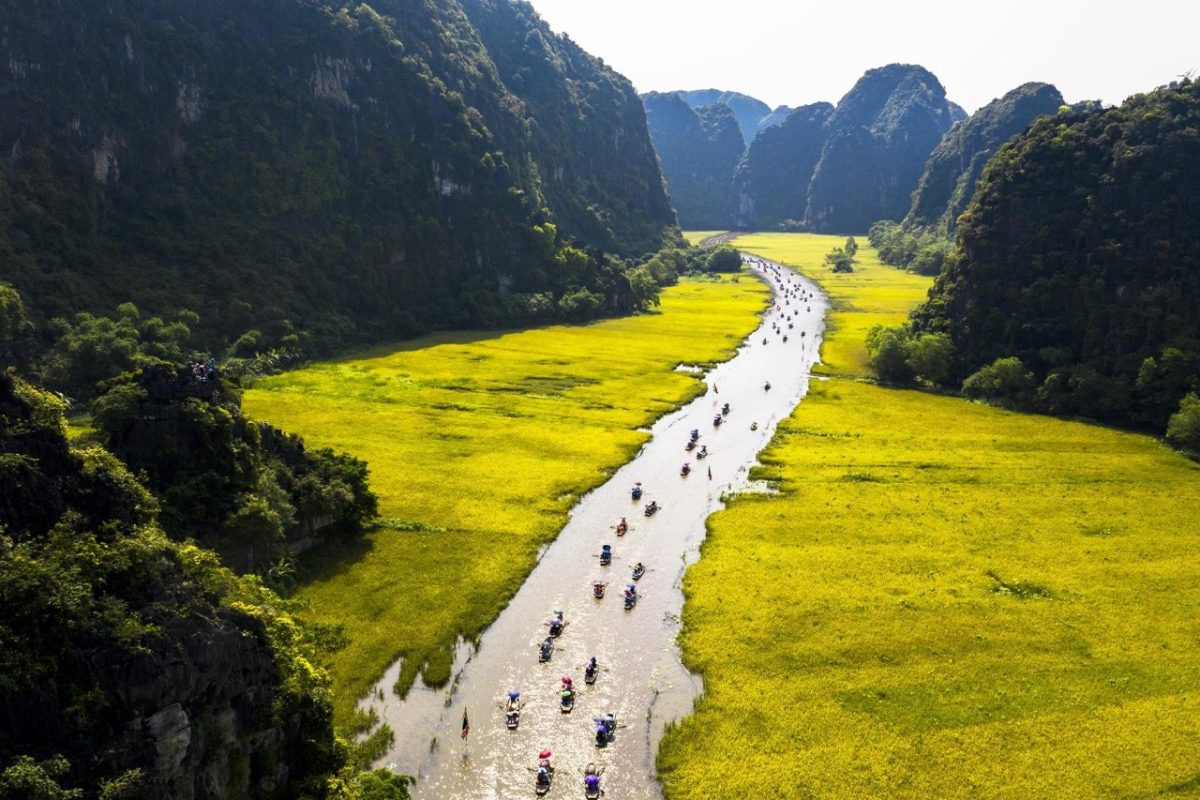
* Note: You will be on the boat between 1.5 and 2 hours, and there are no bathroom stops along the way. Thus, make sure you answer the call of nature before getting on the boat.
2. Explore Hang Ca, Hang Hai, Hang Ba
End your boat tour, floating through the three large caves, namely Hang Ca, Hang Hai, and Hang Ba. These caves attract most visitors to their dramatic-looking stalactites. Among three caves, Hang Ca (or First Cave) is the largest, around 20 meters wide and 127 meters long. When the boat enters the cave, you will feel cool, and the atmosphere seems refreshed. Also, you can see attractive karst formations.
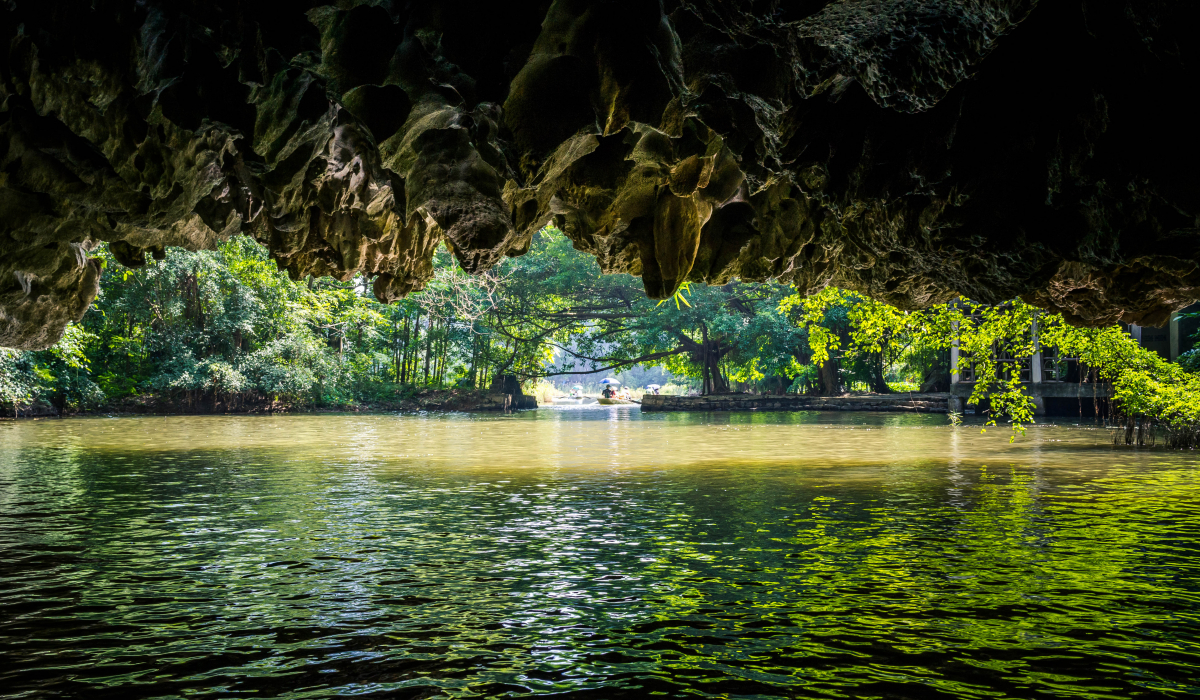
After passing through Hang Ca, tourists will continue to explore Hang Hai which is about 1 kilometer from Hang Ca. Hang Hai means the Second Cave because it is the second largest in size at 60 meters long. The ceiling of the cave is absolutely breathtaking and gorgeous.
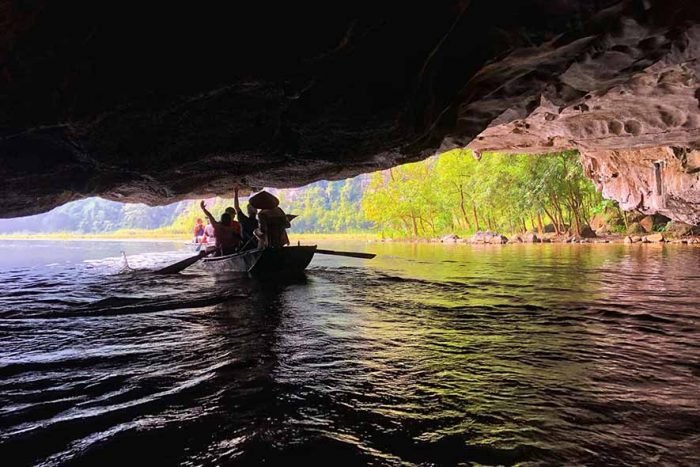
Being just right next to Hang Hai, Hang Ba (Third Cave) is merely 50 meters in length. The height of this cave is shorter than the other two. The ceiling looks like a little dome made of limestone.
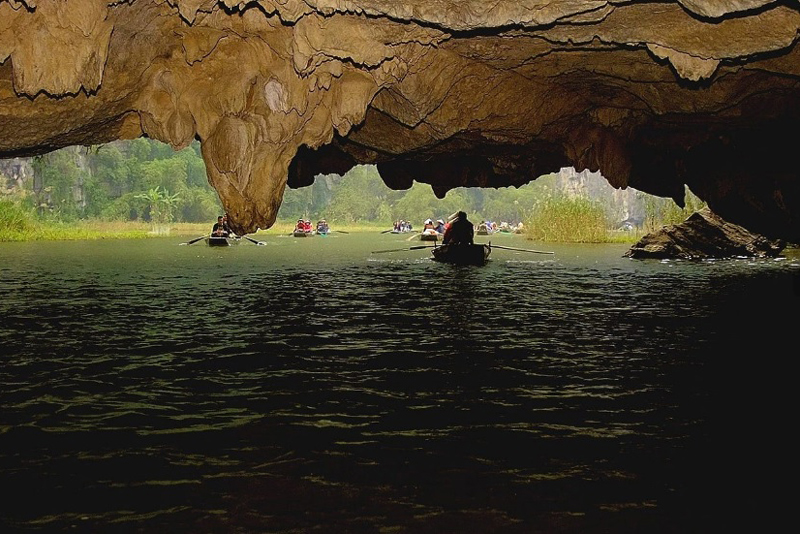
3. Visit Bich Dong Pagoda
Bich Dong pagoda, built in 1428, includes three different cave temples situated at separate levels going up the mountain. From the lower level to the upper level, you will initially reach Ha Pagoda, Trung Pagoda, and then Thuong Pagoda.
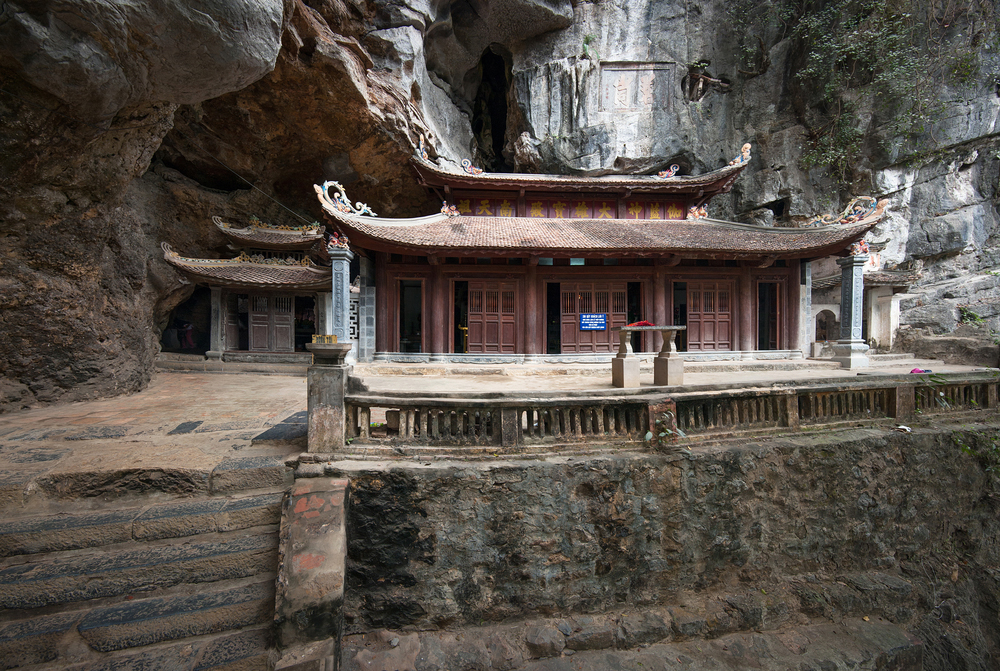
The bridge leading to the pagoda surrounded by floating lotus and flowers looks like a scene from a watercolor painting. After crossing the bridge, you will enter through the ancient gate, and begin your ascent. Moreover, you need to climb 160 steps to reach the top pagoda close to the peak of the mountain. It is noteworthy to spend your time discovering the pagoda because of the amazing views. The construction is built into limestone and surrounded by lush forests.

*Note: The pagoda is open daily and it is free to enter. However, you might have to pay a small fee for parking. Keep in mind that it is a sacred land, and you need to dress politely and respectfully. From 8 AM to 6 PM is the best time to visit there, because you can see the views from the top.
4. Climb Hang Mua Peak
Hang Mua (or Mua Cave) is one of a few caves on the top of a mountain. You have to make a physical effort to climb a steep and challenging 500 steps. When reaching the top of a beautiful cliff view, you may huff and puff, but it is worth it. Once you reach the peak, you will contemplate the panoramic views of the valley below. Furthermore, there is an impressive stone dragon statue at the top, which is the perfect background for your photos. However, be careful when taking photos on the peak because the rocks are slippery and jagged.
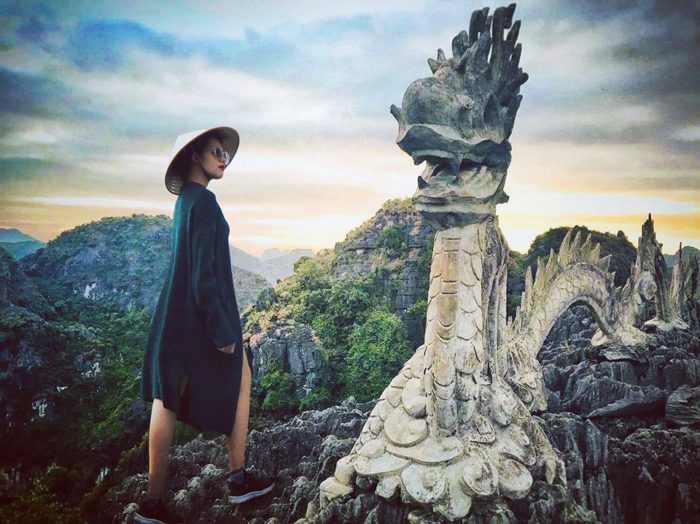
*Note Opening times: 7 AM – 5 PM.
Entrance fee: 100,000 VND (buying a ticket at the Hang Mua ticket booth)
Parking Fee: 10,000 VND

III. Best time to visit Tam Coc
Actually, the weather in Tam Coc remains warm all year round. Thus you can visit this place at any time of year. If you want to see the rice fields turn from green to yellow, late May/early June is your choice. Moreover, lotus flowers also bloom during June, so the landscape is covered by colors. However, April to October is the rainy season and it can be hot and humid. Let’s check the weather forecast before planning the trip. If you want it to be dry and slightly cooler, the months of November to March are the best time for you.

Source: https://en.wikipedia.org/





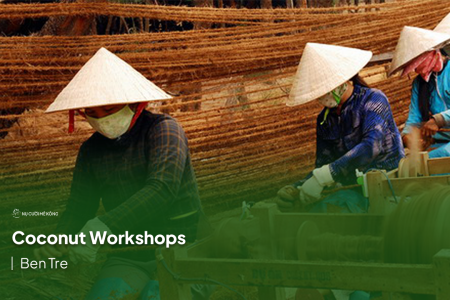
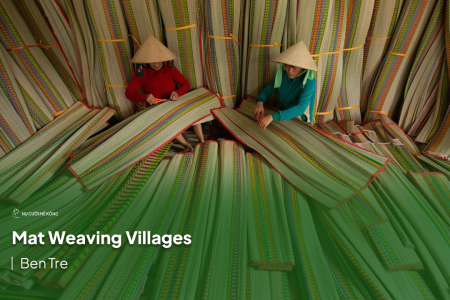

0 Comment